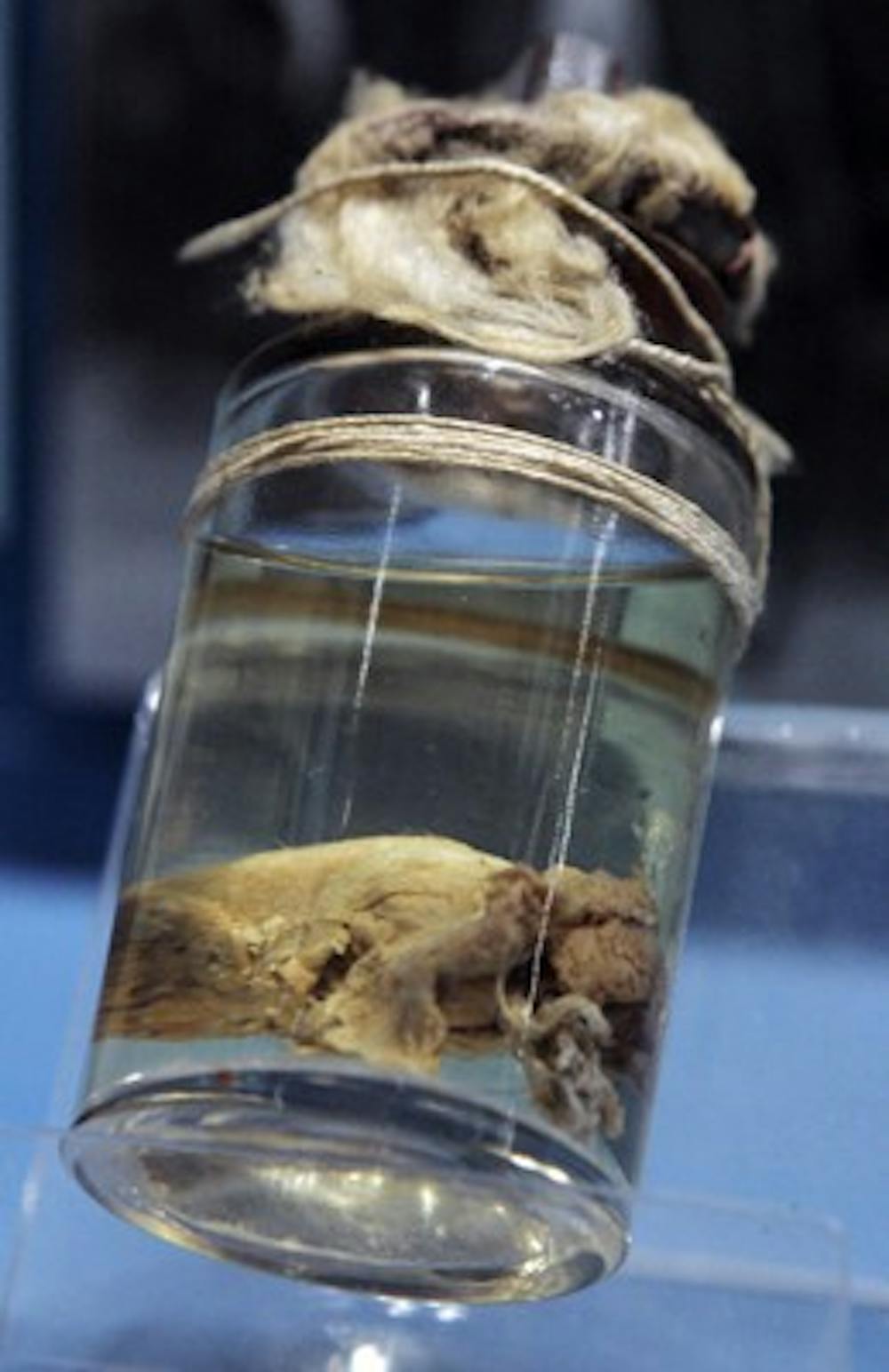PHILADELPHIA– Call it theater of the macabre: A jar containing a small piece of tissue from the body of John Wilkes Booth, President Abraham Lincoln’s killer, will be on display when the musical “Assassins” opens in Philadelphia.\nIn fact, it will be a twin bill: theatergoers will also be able view a piece of the brain of the lesser-known presidential assassin Charles Guiteau, the man who killed President James A. Garfield in 1881.\nThe specimens will be on loan to the Arden Theatre from Philadelphia’s Mutter Museum, which boasts a large collection of medical oddities. They will be on display in the lobby for one night, the opening of “Assassins” on Sept. 19.\n“People know who they are, but to see them in the flesh – no pun intended – to me is exciting, it’s relevant, it’s interesting and it’s educational,” said Anna Dhody, a spokeswoman for the Mutter Museum.\nThe museum is run by the College of Physicians of Philadelphia. Dhody said the samples were acquired long ago but she did not know the circumstances.\nLincoln was shot on April 14, 1865, at Ford’s Theatre, and died the next morning.\nBooth was killed by pursuers 12 days after shooting Lincoln. Guiteau was hanged – after an insanity defense failed – on June 30, 1882.\nThe tissue fragment from Booth is believed to have come from his neck, Dhody said.\n“Assassins,” a Stephen Sondheim musical that explores the nine people who have taken aim at U.S. presidents, won five Tony awards in 2004.\n“When you have the first two ... successful assassins in U.S. history in a city, and you have this wonderful show going on, how do you not combine the two?” said J Nathan Bazzel, a Mutter Museum docent who came up with the idea.\nThe specimens are preserved in fluid in small, vintage glass jars. If a few patrons find the display in poor taste, organizers hope most will appreciate the chance to connect to history.\n“We prefer to think of it as we’re showing our tangible evidence of very, very important parts of American history,” Dhody said. “So we’re hoping people would approach it from more of a historical than a macabre viewpoint.”
Theatre’s lobby holds remnants of real assasins

Get stories like this in your inbox
Subscribe





